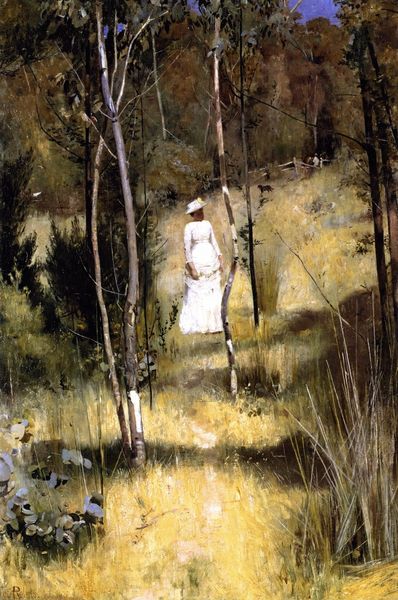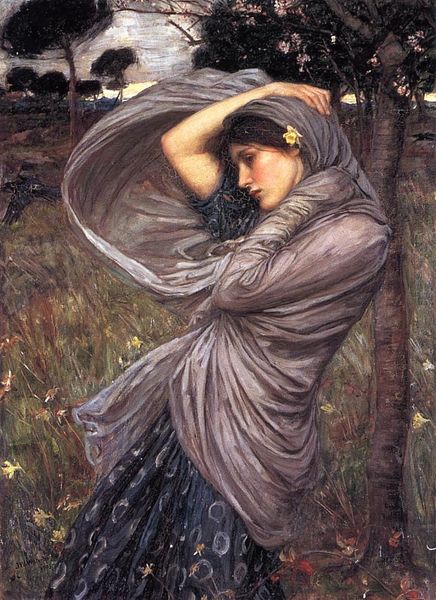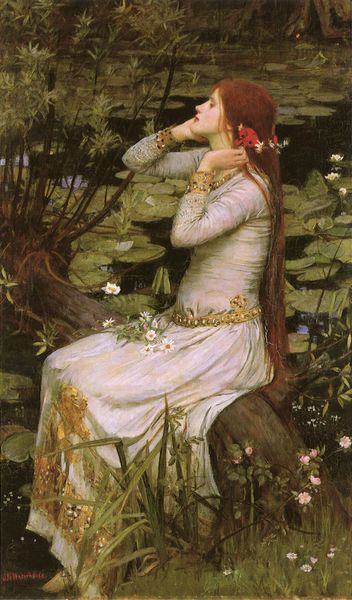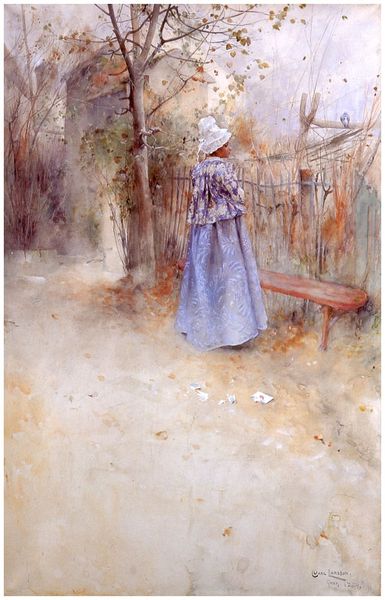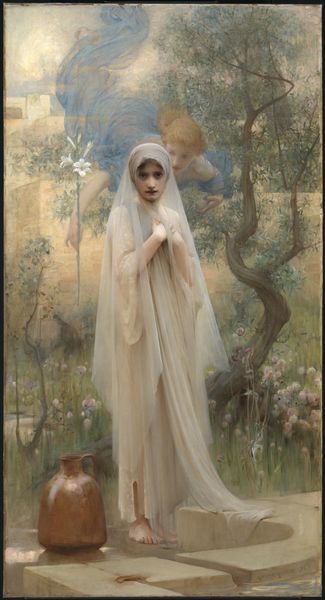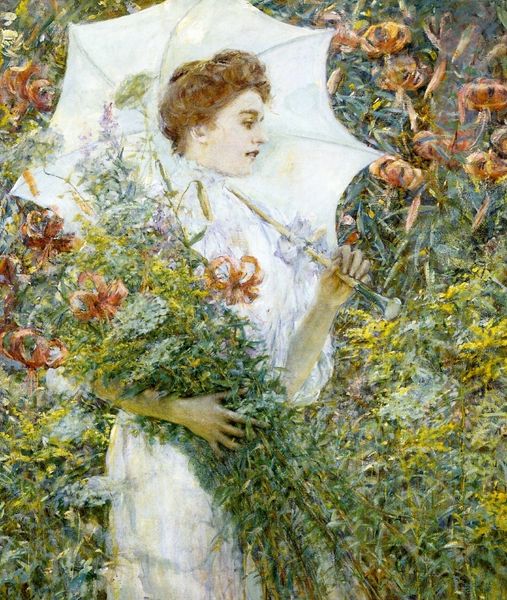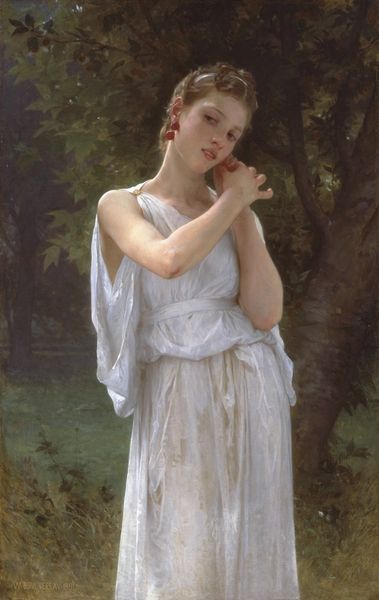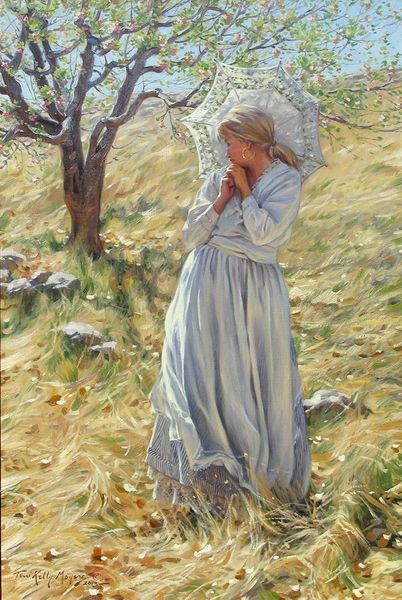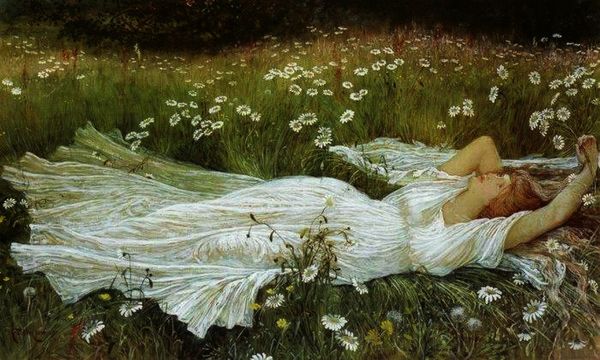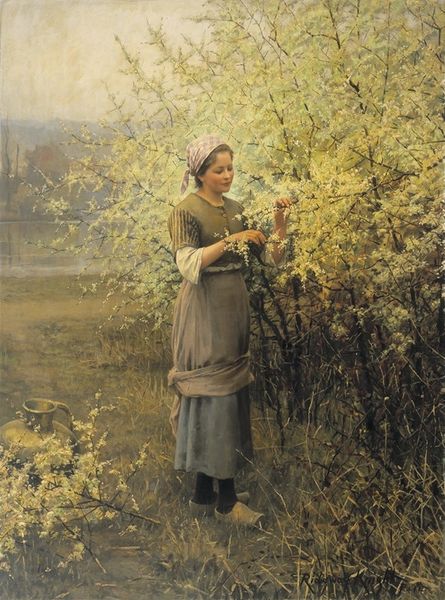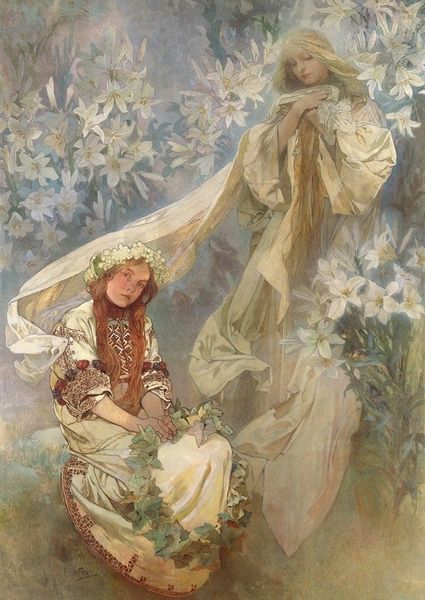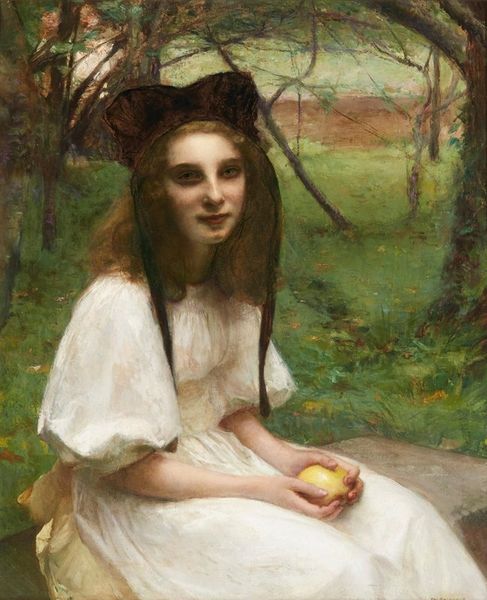
#
glasgow-school
#
the-seven-and-five-society
Copyright: Public domain
George Henry painted 'The Girl in White' probably in the 1890s, using oil on canvas. It depicts a woman in a simple white dress, standing pensively by a tree, and it invites us to consider the social context of leisure and representation at the time. This type of painting emerged during a period of significant social and cultural change in Europe. With the rise of industrialization, there was an increasing emphasis on leisure and the representation of women in art. The woman’s dress signifies both innocence and affluence, reflecting the values of the upper middle class. Henry's artistic training and association with the Glasgow School connect him to debates around realism and the aesthetic movement in Britain, but his personal tastes also led him to explore more decorative effects. Understanding the artist’s influences, the social conditions that shaped his artistic production, and the institutions that exhibited his work can reveal a richer and more nuanced interpretation of this evocative painting. Resources such as period exhibition catalogs, reviews, and social histories will help with this.
Comments
No comments
Be the first to comment and join the conversation on the ultimate creative platform.

